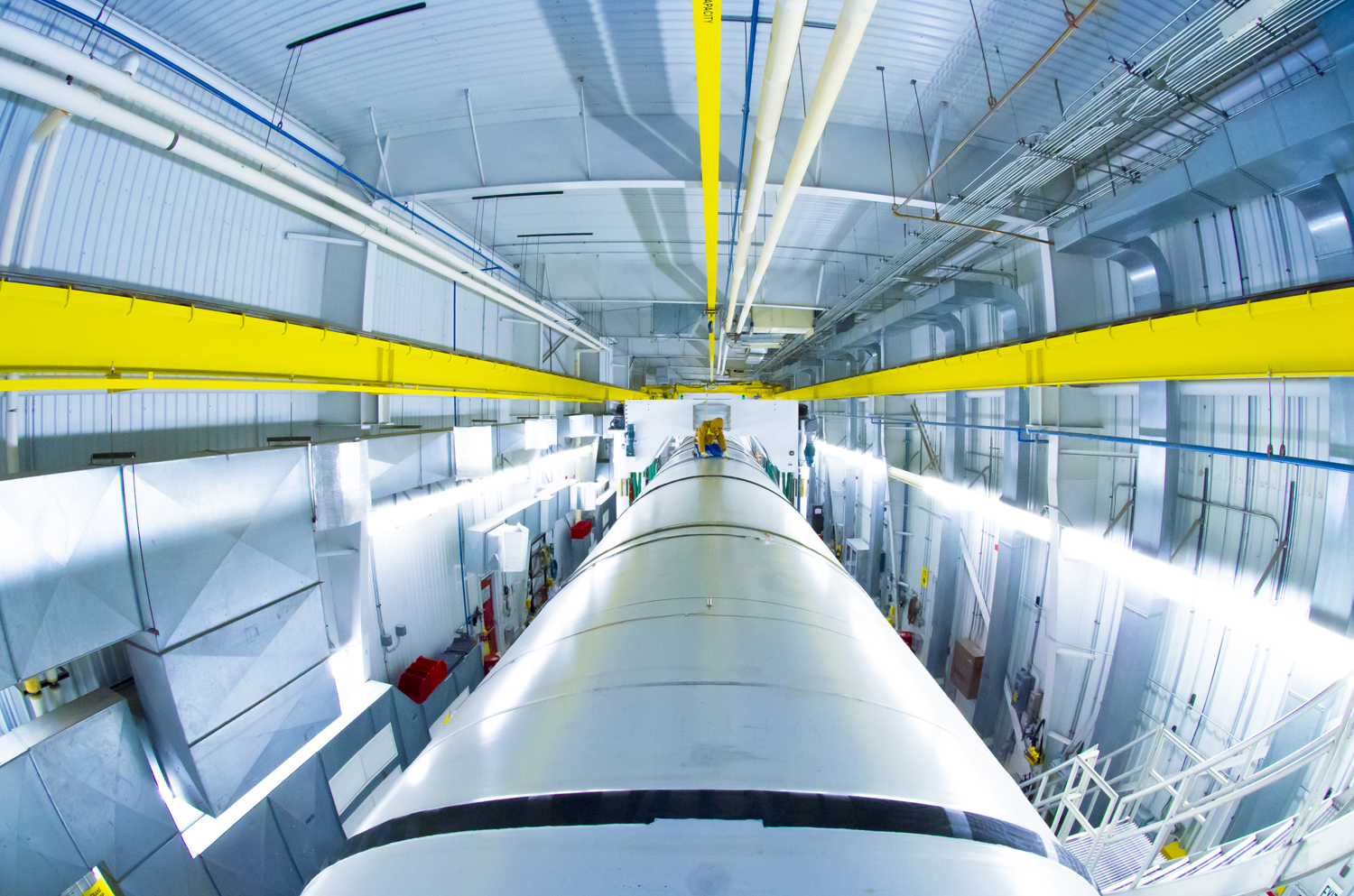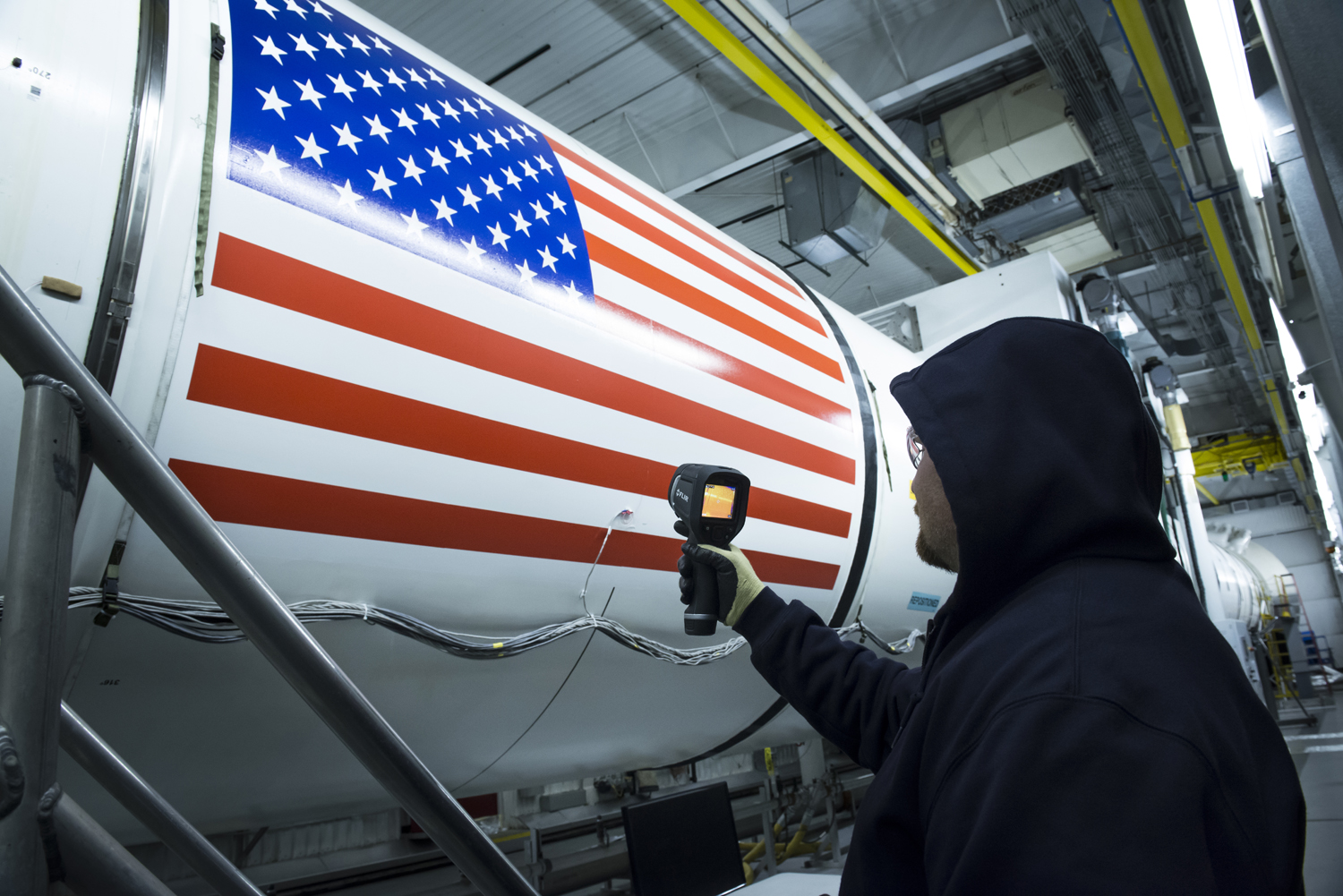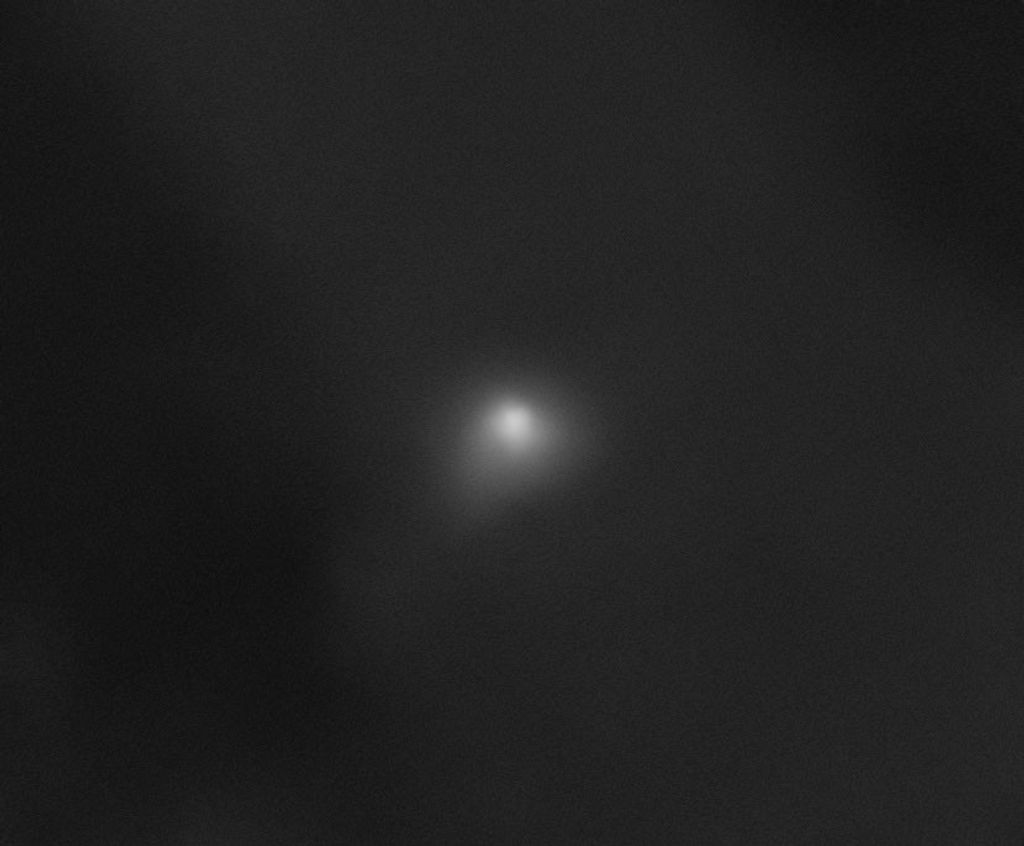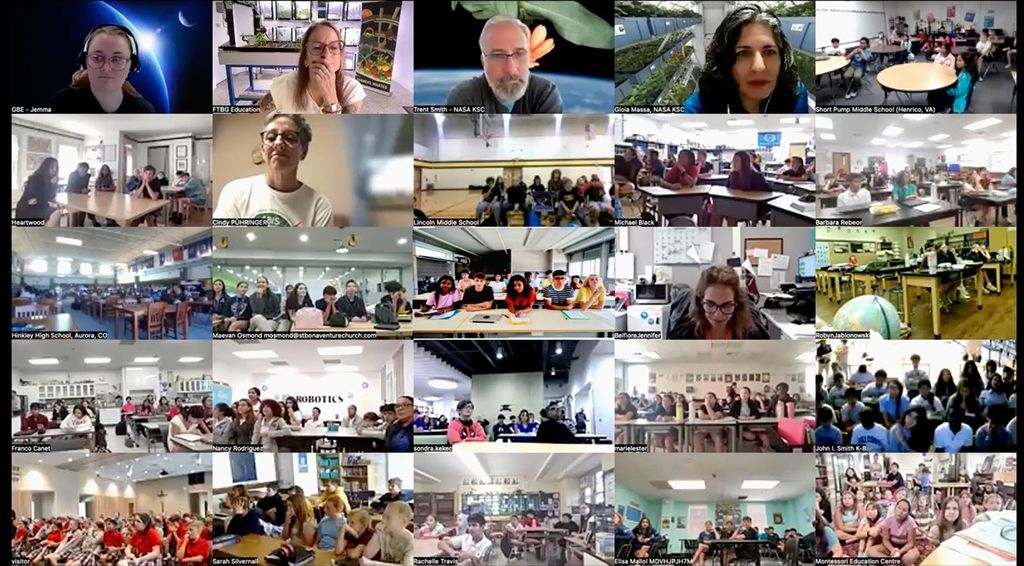The Old Farmer’s Almanac is predicting a hotter-than-normal summer for Utah, but at Orbital ATK’s test facility in Promontory, crews are bundling up to chill down the booster for the world’s most powerful rocket, NASA’s Space Launch System.
The booster is being cooled to approximately 40 degrees Fahrenheit ahead of its second qualification ground test June 28. Testing at the thermal extremes experienced by the booster on the launch pad is important to understanding the effects of temperature on the performance of how the propellant burns. Data and analysis from past human-rated space programs have set the temperature limits for boosters between 40 and 90 degrees Fahrenheit. The booster was heated to 90 degrees Fahrenheit for the first successful booster qualification test in March 2015.

“In the winter or summer, you expect your car to start – regardless of what the temperature is outside,” said Mat Bevill, deputy chief engineer in the SLS Boosters Office at NASA’s Marshall Space Flight Center in Huntsville, Alabama, where the SLS program is managed for the agency. “That car had to be tested to ensure it performed as it was designed to do, even in wide temperature ranges. That’s pretty much what we’re doing — except with a huge rocket booster.”
The massive size of the booster means it will take more than a month to reach the cold temperature target for the booster inside the test stand. Three large air-conditioning units – similar to those used for outdoor ice skating rinks – have been placed around the test facility, and are continually pumping air at 25 degrees Fahrenheit into the test stand house surrounding the booster. Sensors inside and outside the booster measure the propellant temperature, and analytical models predict the time it takes for the booster to be conditioned to 40 degrees.
“Propellant temperature shouldn’t be mistaken for the temperature of the booster when it’s fired,” Bevill added. “It may be conditioned to 40 degrees Fahrenheit, but once it fires, it is extremely hot – about 6,000 degrees Fahrenheit. That’s hot enough to boil steel.”
The day of the static fire, the test stand house will be rolled out of the way. “Cold conditioning in the summer isn’t exactly optimal, but that’s just one of the challenges with staying on schedule. We have to keep marching forward to be ready for flight,” Bevill said. “But just like it takes a long time to cool the booster, it also takes a long time for it to warm back up. Testing early in the morning before it gets too hot helps, and we chill to a few degrees cooler than the target of 40 degrees to account for the summer heat on test day.”
The two-minute, full-duration firing of the 177-foot booster will be the last full-scale test to support qualification of the hardware for the first two flights of SLS. Some 82 design objectives will be measured through more than 530 instrumentation channels on the booster. Along with measuring the ballistic performance at the lower end of the booster’s accepted propellant temperature range, the test also integrates SLS flight-like command and control for motor ignition and nozzle steering.

After this test, the next time a SLS booster will be fired up will be on the launch pad at NASA’s Kennedy Space Center in Florida. Two five-segment solid rocket boosters, along with four RS-25 engines, will propel SLS with the Orion spacecraft on its first mission in 2018.
“We’re working with Orbital ATK as they get ready to fire this booster in June,” said Bruce Tiller, deputy manager of the SLS Boosters Office at Marshall. “In conjunction with testing, booster flight hardware is currently in production. NASA is preparing for the first flight of SLS, and each of these programmatic milestones provide crucial data to enable human missions to deep-space destinations, including Mars.”
While the boosters for the space shuttle had four booster segments, the SLS boosters will have five segments. The added booster segment for SLS contains more solid propellant that allows SLS to lift more weight and reach a higher altitude before the boosters separate from the core stage within the first two minutes of flight. The core stage, towering more than 200 feet tall with a diameter of 27.6 feet, will store cryogenic liquid hydrogen and liquid oxygen that will feed the vehicle’s RS-25 engines.
The initial SLS configuration will have a minimum 70-metric-ton (77-ton) lift capability. The next planned upgrade of SLS will use a powerful exploration upper stage for more ambitious missions with a 105-metric-ton (115-ton) lift capacity. A later configuration will replace the five-segment solid rocket boosters with a pair of advanced solid or liquid propellant boosters to provide a 130-metric-ton (143-ton) lift capacity. In each configuration, SLS will continue to use the same core stage and four RS-25 engines.
For more information on SLS, visit:
Kim Henry
256-544-0034
Kimberly.m.henry@nasa.gov




























